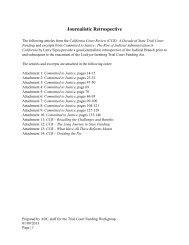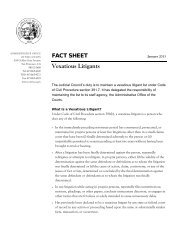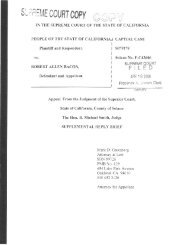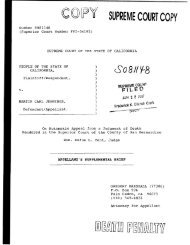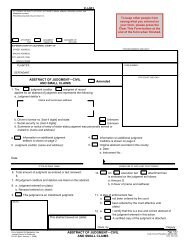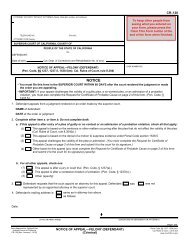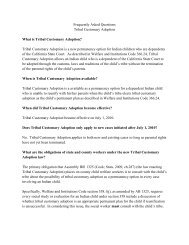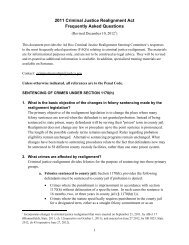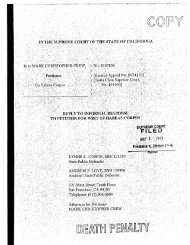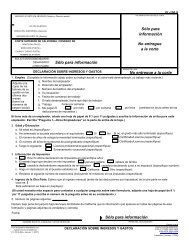Appellant, William Satele, Reply Brief - California Courts - State of ...
Appellant, William Satele, Reply Brief - California Courts - State of ...
Appellant, William Satele, Reply Brief - California Courts - State of ...
Create successful ePaper yourself
Turn your PDF publications into a flip-book with our unique Google optimized e-Paper software.
conduct, conditions, or events occurring, either within or without the<br />
jury room, <strong>of</strong> such a character as is likely to have influenced the<br />
verdict improperly. No evidence is admissible to show the effect <strong>of</strong><br />
such statement, conduct, condition, or event upon a juror either in<br />
influencing him to assent to or dissent from the verdict or concerning<br />
the mental processes by which it was determined.<br />
Section 1150 is the codification <strong>of</strong> the traditional rule that allows evidence<br />
as to any matter that could have affected a juror, but forbids evidence as to the<br />
actual impact <strong>of</strong> such evidence on the minds <strong>of</strong> the jurors. (e.g. People v. Stokes<br />
(1894) 103 Cal. 193, 196-197.) Thus, the rule is that a court cannot consider<br />
evidence <strong>of</strong> what the jury actually "felt" or thought or how the jurors understood<br />
the instructions. (People v. Lindberg (2008) 45 Cal.4th 1, 53)<br />
As a result, courts necessarily have to engage in an analysis <strong>of</strong> how jurors<br />
as people will "normally" act. For example, in People v. Horning (2004) 34<br />
Cal.4th 871 the trial court allowed a criminalist to testify that the forensic evidence<br />
was not conclusive. Rejecting the defendant's contention the evidence should<br />
have been excluded as irrelevant and unduly prejudicial, this court explained that<br />
had the evidence been excluded the jury ''would naturally wonder if' any testing<br />
had been done on the bullets. (Id. at pp. 900-901, italics added.) Similarly, in<br />
People v. Ewoldt (1994) 7 Cal.4th 380, in describing the possible prejudice from<br />
the introduction <strong>of</strong> evidence <strong>of</strong> a defendant's prior uncharged bad acts, this court<br />
stressed the danger ''that the jury might have been inclined to punish defendant for<br />
the uncharged <strong>of</strong>fenses..." (Id. at p. 405, italics added.) Likewise in People v.<br />
Harris (1998) 60 Cal.AppAth 727, the court approved <strong>of</strong> the exclusion <strong>of</strong><br />
evidence on the ground that it was "remote, inflammatory and nearly irrelevant<br />
and likely to confuse the jury and distract itfrom the consideration <strong>of</strong>the charged<br />
<strong>of</strong>fenses. (ld. at p. 741, italics added.)<br />
Stating that a jury ''would naturally wonder" about something (Horning),<br />
"might have been inclined" to be influenced (Ewoldt), or was "likely to [be]<br />
121



